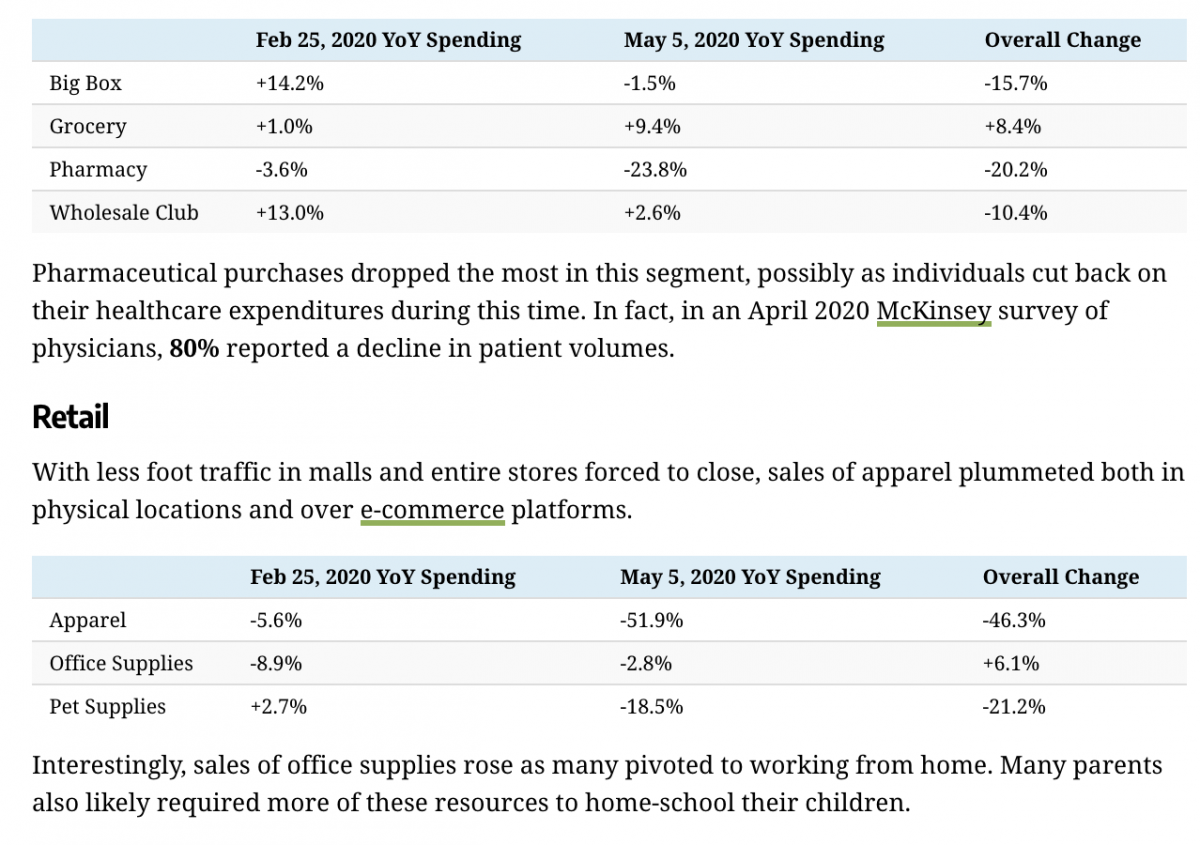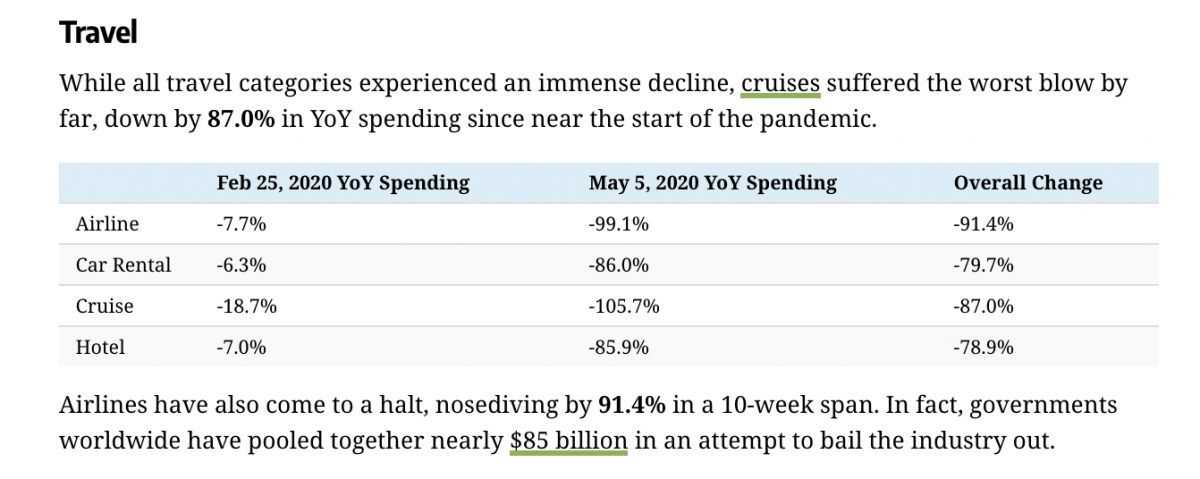How U.S. Consumers are Spending Differently During COVID-19
In 2019, nearly 70% of U.S. GDP was driven by personal consumption.
However, in the first quarter of 2020, the COVID-19 pandemic has initiated a transformation of consumer spending trends as we know them.
Consumer Spending in Charts
By leveraging new data from analytics platform 1010Data, today’s infographic dives into the credit and debit card spending of five million U.S. consumers over the past few months.
Let’s see how their spending habits have evolved over that short timeframe:

The above data on consumer spending, which comes from 1010Data and powered by AI platform Exabel, is broken into 18 different categories:
- General Merchandise & Grocery: Big Box, Pharmacy, Wholesale Club, Grocery
- Retail: Apparel, Office Supplies, Pet Supplies
- Restaurant: Casual dining, Fast casual, Fast food, Fine dining
- Food Delivery: Food delivery, Grocery Delivery, Meal/Snack kit
- Travel: Airline, Car rental, Cruise, Hotel
It’s no surprise that COVID-19 has consumers cutting back on most of their purchases, but that doesn’t mean that specific categories don’t benefit from changes in consumer habits.
Consumer Spending Changes By Category
The onset of changing consumer behavior can be observed from February 25, 2020, when compared year-over-year (YoY).
As of May 12, 2020, combined spending in all categories dropped by almost 30% YoY. Here’s how that shakes out across the different categories, across two months.
General Merchandise & Grocery
This segment saw a sharp spike in initial spending, as Americans scrambled to stockpile on non-perishable food, hand sanitizer, and toilet paper from Big Box stores like Walmart, or Wholesale Clubs like Costco.
In particular, spending on groceries reached a YoY increase of 97.1% on March 18, 2020. However, these sudden panic-buying urges leveled out by the start of April.



Hope on the Horizon?
Consumer spending offers a pulse of the economy’s health. These sharp drops in consumer spending fall in line with the steep decline in consumer confidence.
In fact, consumer confidence has eroded even more intensely than the stock market’s performance this quarter, as observed when the Index of Consumer Sentiment (ICS) is compared to the S&P 500 Index.

Many investors dumped their stocks as the coronavirus hit, but consumers tightened their purse strings even more. Yet, as the chart also shows, both the stock market and consumer sentiment are slowly but surely on the mend since April.
As the stay-at-home curtain cautiously begins to lift in the U.S., there may yet be hope for economic recovery on the horizon.



